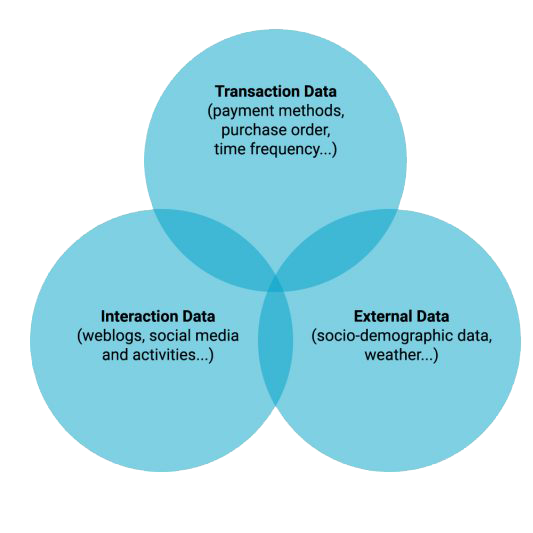Predictive analytics for marketing
Predicting customer behaviour and preferences is the hallmark of companies such as booking.com or bol.com. But the technology is becoming increasingly accessible and relevant for smaller companies.
Thirty years ago, predictive analytics would have been widely adopted in business if computer power were only a mere afterthought, if data was more accessible, and the software was easier to use. Predictive analytics was then just a ‘buzzword’, stuffed with bluff and promises, too big to deliver.
Because of that legacy, many businesses are often still operating their marketing KPIs in Google sheets or Excell. “Throw it in a spreadsheet” is still the mantra in many companies today.
In the present, when computer resources are abundant and immediately accessible, businesses with an eye to the future want to know more than just what happened in the past. Many analytics and tracking tools don’t tell you what the outcome will be, it only tells you the numbers. Executives are searching for ways to look forward with their numbers, not just back.
Here at ML2Grow, we have the experts to implement the best predictive systems for your organisation.
Predictive Modeling for customer behaviour
The most used predictive models are:
- Cluster models: are used for customer segmentation, algorithms segment target groups based on numerous variables, from demographics to average order total. This will be the focus of our article.
- Propensity models (predictions) are used for giving predictions about customer behaviour. A range of predictive analytic models can be used in this application, including churn prediction, which we talked about in our blog post ‘our secret to predicting customer churn’.
- Collaborative filtering (recommendations): in our previous blog post ‘how to boost your sales with a recommender system’ we explained the power of recommender systems and the techniques used such as collaborative filtering. It recommends products, services, and advertisements to customers based on various variables.
Targeting the right customers at the right time with the right content
Targeting the right customers at the right moment with the best offer links us to customer segmentation. This may be the most common marketing application for predictive analytics because it is one of the most direct ways to optimize a marketing offer and see a quick turnaround on better ROI.
Your data set is worth gold, yes G-O-L-D. Every company, small or big, uses an ERP system with loads of customer data. Best practices dictate using historical data on the behaviour of existing customers to segment and target and using that same data to create personalized messages. According to various studies, predictive analytics users are twice as likely to identify high-value customers.
Customer segmentation
Segmentation is a marketing process that divides a broad target market into categories (consumers, businesses, etc.) that typically would have a common interest, traits, or needs.
Marketers segment user or customer databases to link a product and/
or service to a specific target with the right message.
The effectiveness of traditional segmentation is limited by its reliance on fixed methodologies. With traditional segmentation, customer knowledge is moulded upon rigid, and often outdated, categories, an approach that often leads marketers astray when attempting to optimize campaigns to specific targets.
Luckily, our AI expertise can be used to innovate this approach. Enter AI-based segmentation: the art of creating dynamic segments of users or customers based on interactions between a huge diversity of data points. These new sources of highly specific information provide a more detailed and ever-evolving opportunity to intelligently and dynamically segment customer databases.
AI-based customer segmentation provides two strategic advantages:
A 360-degree view of customer data in real-time
Broadly speaking, there are three types of data (transaction, interaction, and external) that, when combined, provide a holistic view of your customer. These three data types, when combined, create a global image of your customer. So what does that mean? It means that companies now can truly understand their customers: how do they pay for goods? What do they like on social media? What is the traffic like when they typically visit your website? Model segmentation data breaks the mould of older techniques by collecting data directly from the customer instead of relying on marketers to frame data questions. Understanding complex customer data and its representative elements will help us define where user information comes from and how it can be used to segment user databases dynamically.
Advanced analytical capabilities
Making sense and predicting future trends in user data is made possible by machine learning. Machine learning empowers companies to explore data on a much more granular and dynamic level than traditional segmentation to make sense of data. Advanced modelling, testing, and visualization techniques provide detailed predictive insights into customer behaviour.

A holistic view of customer data.
How it can help your business?
Like machine learning, customer segmentation is getting a lot of attention. Companies investing in AI-powered customer segmentation are starting to outpace those who still choose to go without.
The biggest challenges that companies face in their marketing plans are:
- Creating more personalized and relevant messages for increasingly selective buyers
- Creating customized marketing campaigns that engage a wider range of key decision-makers and influencers earlier in the buying process
At ML2Grow, we can help your business or marketing team to achieve these goals. With our systems implemented without disturbing your workflow, we believe it will be an important stepping stone to better business results and metrics and will deliver a greater impact across the customer life cycle.